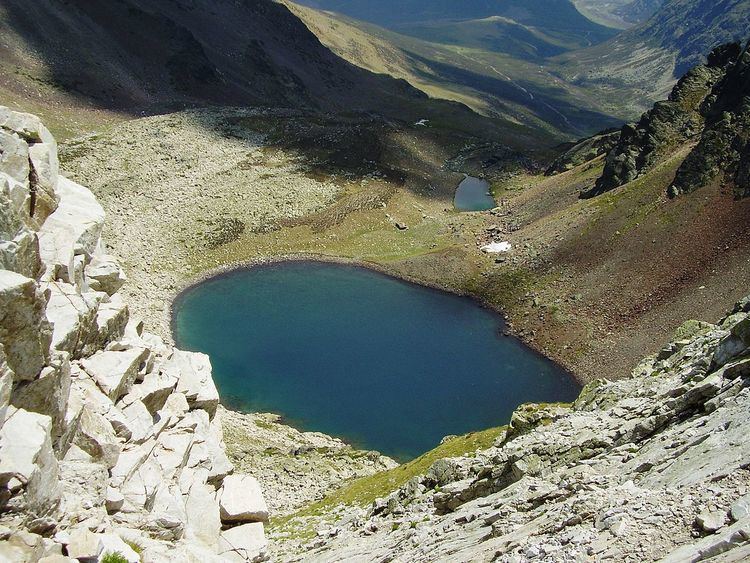Visitors 21179 (in 2007) Area 783.6 km² Established June 27, 2000 | Address Palencia, Spain Province Province of Palencia | |
 | ||
Governing body Junta de Castilla y Léon Similar Casa Rural La Corva, Hotel Rural Posada Fuentes, La Tenada, Molino de Valdesga, Parador de Cervera de Pisuerga | ||
Fuentes Carrionas y Fuente Cobre-Montaña Palentina is a natural park in the north of the province of Palencia in Castile and León, Spain.
Contents
The park was declared in 2000 and is one of a number of protected areas in the Cantabrian Mountains. The name of the park refers to the Fuentes Carrionas sub-range (source of the river Carrión) and to Fuente Cobre (the traditional source of the river Pisuerga). From an ecological point of view, most of the park is within the Atlantic biogeographical region, but it is on the edge of that region and 4% of the area is classed as Mediterranean.
Fauna
In 2000 the natural park was designated a Special Protection Area for bird-life (reference number ES4140011) under the European Union's Birds Directive. It has been proposed as a Site of Community Importance, as it contains various species of European interest.
Birds
The Cantabrian Capercaillie became extinct in the natural park at the beginning of the twenty-first century. Since 2010 the European Union's LIFE programme has supported a recovery plan for this subspecies, "Urgent measures scheme for the conservation of the capercaillie (Tetrao urogallus cantabricus) and its habitat in the Cantabrian mountains". This project is scheduled to run until 2014 across SPAs and Biosphere reserves in the region, and the natural park has been identified as a suitable site for the bird's reintroduction.
Invertebrates
Invertebrates include the Kerry Slug.
Mammals
The park is important as a habitat of the endangered Cantabrian brown bear. There is an interpretation centre for the bear at Verdeña, Cervera de Pisuerga.
In the twentieth century the Cantabrian brown bears were divided into two sub-populations by habitat fragmentation. The natural park lies within the range of the eastern sub-population, which is the smaller of the two and at risk from endogamy. In 2009 a genetic study indicated that the bears had reversed the division of their range in Spain, and there is inter-breeding between the two sub-populations. Since 2009 the LIFE Programme has supported conservation work in the Cantabrian Mountains to enhance wildlife corridors with the aim of encouraging a natural flow of bears between sub-populations.
Hunting
A national hunting reserve, the Reserva Nacional de Caza de Fuentes Carrionas, was in existence prior to the designation of the natural park, and it now forms a regional hunting reserve within the park boundaries. With an area of 49, 471 ha the hunting reserve covers the greater part of the natural park. While the hunting has been described as well-managed, there is some controversy as to whether a management regime appropriate for game species such as wild boar or deer is compatible with the interests of the protected species.
San Glorio Ski Resort
In 2004 a ski resort was proposed for the mountain pass of San Glorio which would directly impact the natural park. In 2006 the regional government relaxed the protection it had given the park in order to permit the development of a ski resort. The promotors of the project argued that it would help the local human population. There are about 2000 people living in the park. The area, like many Spanish rural districts, suffered from demographic decline in the twentieth century.
Environmentalists have disputed the economics of the project as, according to official predictions, the duration of seasonal snow cover in the Cantabrian mountains was likely to be adversely affected by global warming. Environmentalists have also argued that a ski resort would be incompatible with the aim of promoting the recovery of the brown bear, given that bears would be likely to avoid such a facility and that their habitat would thus be fragmented.
In March 2008, the High Court of Castilla y León ruled that the regional government’s sudden change in its own planning regulations, without a proper assessment, not only went against its own regional law, but both the national law on nature conservation and the European Natura 2000 regulations. The court also noted that climate change threatened the viability of the projected ski resort. However, despite this setback, the regional government continued to support the development. As at July 2010 the regional government was planning to submit a revised proposal to the European Union in the hope that it would not conflict with the Habitats Directive.
